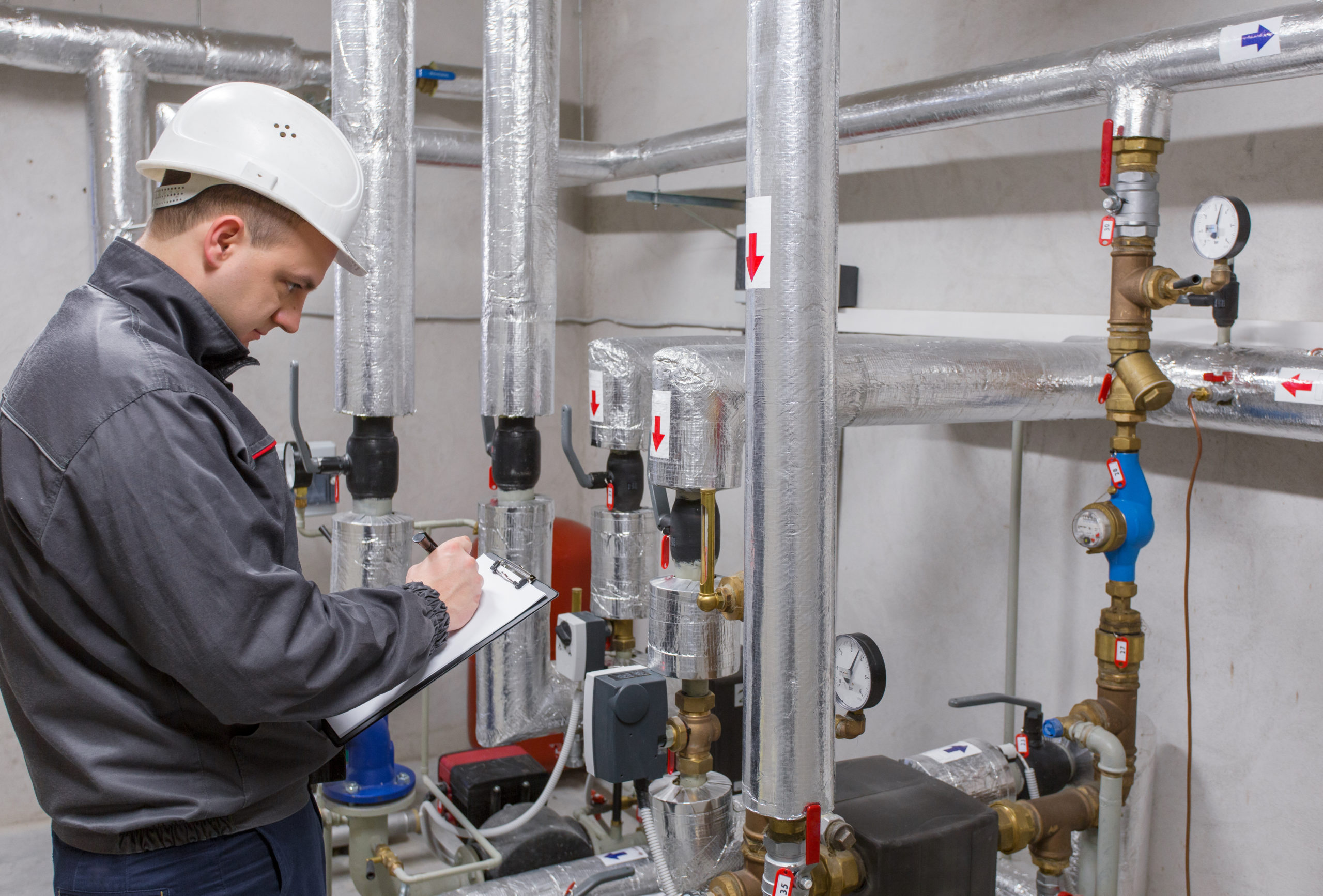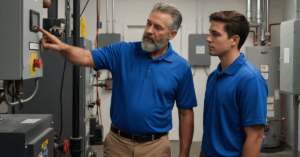When it comes to the upkeep of a building, preventive maintenance (or preventive maintenance) refers to a combination of frequent inspections, regular servicing, and part replacements for all systems. The point of preventive maintenance is to prevent equipment failures well before they happen to keep a building in the best conditions for working and living.
Studies have actually shown that preventive maintenance saves building owners a lot of money compared to other types of maintenance (like predictive and reactive). In fact, according to Pacific Partners Consulting Group, every $1 spent on preventive maintenance saves $4 long-term, which would otherwise be spent making costly repairs. Not only is preventive maintenance a cost-saver, but it’s also the most preferred type of facility maintenance among the technicians performing the work.
Here’s a quick look at the variety of areas that preventive maintenance can be applied:
Different Areas of Preventive Maintenance
Three key areas help define what preventive maintenance is and how it can be effective in any building maintenance strategy: plumbing, electrical, and HVAC.
Preventive Maintenance for Plumbing
Plumbing systems should be inspected at least once per year to check for leaks, cracked pipes, and unusual noises. Other important preventive inspections include:
- Water heater testing every few months to ensure that they are remaining fireproof
- Re-lubrication of pumps, fans, and bearings
- Function testing and lubrication for sump and sewage ejection pumps
Frequent inspection of a building’s plumbing system is one of the best ways for businesses to save money on building maintenance. A single burst or broken pipe can cost as much as $850 to repair the damage, depending on how soon it was noticed. With preventive maintenance, potential problems can be noted and fixed sooner, costing much less.
Preventive Maintenance for Electrical
Electrical systems require more frequent preventive maintenance including:
- Battery replacements, in particular, the batteries powering appliances responsible for employee safety, such as smoke and carbon monoxide detectors.
- The inspection of plates covering outlets, switches, and wiring
- The inspection and cleaning of exhaust fans
- Ensuring timers and photocells are functioning
Frequent electrical inspections provide many financial and legal benefits. Not only is the risk of a building fire reduced, but it also can prevent potential lawsuits from employees interacting with faulty electrical equipment. Additionally, electrical repairs can range into the thousands and set back a maintenance technician’s schedule significantly.
Preventive Maintenance for HVAC
The heating, ventilation and air conditioning system (HVAC) provides a comfortable working and living environment for all building occupants. A full inspection should occur at least twice a year, prior to the transition between “heating season” and “cooling season.” Inspections should include:
- Regularly changing air filters
- Cleaning motors
- Testing all electrical connections
- Addressing any strange noises or vibrations within the system
Broken air conditioning for a single day in the summer can result in an unworkable or unlivable environment. Even if the repairs aren’t extensive, the setback in the schedule for a maintenance technician and any loss of work for employees of the building could turn into a big financial loss.
The Importance of Ongoing Technician Training
A properly trained maintenance technician is able to keep the plumbing, electrical, and HVAC systems in working order. They understand the steps of an inspection and are able to identify areas that require frequent attention, such as cover plates, pumps or vents.
Unfortunately, evaluations of maintenance staff have shown that the majority have less than 50% of the knowledge and training needed to properly do their job.
You and your team of techs can avoid becoming part of this statistic by offering regular property maintenance training opportunities, with help from companies like Interplay Learning. Just a little training can show improved results – the Department of Education reports that every 10% increase in knowledge leads to an 8.6% increase in productivity. More knowledgeable employees also means better inspected and maintained systems, saving more money down the line.
Online Preventive Maintenance Training with Interplay Learning
Whether you and your facilities maintenance team are looking to brush up on the basics or dive into more advanced maintenance training, Interplay Learning offers course catalogs in facilities maintenance, plumbing, electrical and HVAC. Unlike most courses, Interplay Learning allows maintenance technicians to practice hands-on approaches to solving problems through fully interactive, virtual-reality based simulations.
Whether you and your facilities maintenance team are looking to brush up on the basics or dive into more advanced maintenance training, Interplay Learning offers course catalogs in facilities maintenance, plumbing, electrical and HVAC. Unlike most courses, Interplay Learning allows maintenance technicians to practice hands-on approaches to solving problems through fully interactive, virtual-reality based simulations.
In addition, ongoing training with Interplay keeps maintenance staff up-to-date on the latest system technologies and preventive maintenance strategies. You’ll notice a clear difference as each inspection and part replacement becomes quicker and more efficient.
LEARN MORE ABOUT INTERPLAY LEARNING
Frequently Asked Questions
What is preventive maintenance and why is it important?
Preventive maintenance refers to a combination of frequent inspections, regular servicing, and part replacements for all systems in a building to keep it maintained properly. The point of preventive maintenance is to prevent equipment failures well before they happen to keep a building in the best conditions for working and living.
How do you do preventive maintenance?
A well-trained facilities maintenance team can perform preventive maintenance duties by inspecting and replacing parts of a building’s plumbing, HVAC, and electrical systems multiple times a year to prevent them from failing.
How often should preventive maintenance be performed?
In general, preventive maintenance should be performed once every few months or a few times a year. More specifically, plumbing systems should be inspected at least once per year, HVAC systems at least twice a year, and electrical systems more frequently throughout the year due to more hazardous situations.
What are preventive maintenance examples?
Some preventive maintenance examples include:
- Battery replacements, in particular, the batteries powering appliances responsible for employee safety, such as smoke and carbon monoxide detectors.
- Regularly changing air filters
- Addressing any strange noises or vibrations within HVAC systems
- Re-lubrication of pumps, fans, and bearings in plumbing systems




